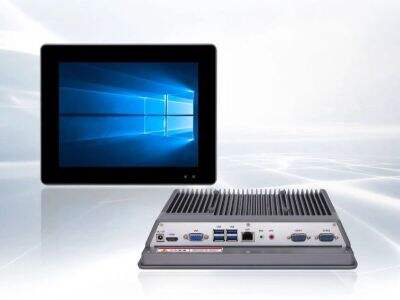Have you ever wondered how a touch screen is able to work? Touchscreens are awesome, allowing us to interact with our phones and tablets simply by tapping the displays. The two main types are capacitive touch screen and resistive touch screen. All of them work differently because each spec has its own features.
Capacitive Touch Screens
Capacitive Touch Screen: Capacitive touch screens have a layer of conductive material on top of a glass or plastic surface. The screen can feel your fingers or a special pen, when you touch the screen. It can detect the electrical charge of your finger and identify exactly where you touched. In other words, when you touch the screen, it will be able to pick up on it fast enough and translate your tap into an action like opening an app or scrolling through a website. This type of screen is very common for smartphones and tablets with its user friendliness and responsivity.
Resistive Touch Screens
In contrast, resistive touch screens work in quite another way. It is composed of two flat conductive electrodes separated by a very small gap. Meaning that when you press on the screen, both layers come into contact and the screen knows where Industrial Panel PC was touched. If this was a resistive touch screen, you know, it turns out capacitive ones can't distinguish between finger and stylus only, feel free to use any foreign object in your stead. That translates to being able to use a Wacom-compatible stylus, a pen or even your finger on the display. This can be helpful for more precise tasks, such as drawing or writing.
Sensitivity vs. Accuracy
While they are similar in some ways, one major difference is the sensitivity to accuracy of touch. The capacitive touch screen that it uses is extremely prone to sensitivity. This allows for perfect tactile feedback down to the lightest touch (including for rapid actions). But with that sensitivity comes the possibility of unintended taps on your screen — and if you're trying to be cautious, those can sometimes lead to mistakes.
However, resistive touch screens are also unreliable. you have to press the screen harder for it to sense a Industrial Mini PC touch. This is useful when you want to make sure your input has been registered, but can be cumbersome if you have gloves on or are using something that doesn't apply enough pressure. But this means that it will never be as accurate or detailed as a resistive screen: even the zero-pressure force of your fingertip brushing against metal would be recognized by this technology.
Durability
When selecting a touchscreen, you also need to consider its longevity. Because there are no moving parts with a capacitive KVM Switch touch screen, these types of screens are generally more durable than resistive easily systems broken or worn down. Of course, however, they are still easily Scratchable and can be cracked if you dropped them.
However, resistive touch screens can be less durable and break more easily due to the fact that they have components which will wear down even used properly. It will however, generally feature less scratches and cracks when compared to capacitive screens. That means if your touch screen will be used in a rugged setting, then perhaps you should go with a resistive touch screen because of its hardiness.
User Experience
The choice of touch screen can really influence the way you use your device. It is more convenient to use, and it responds quickly. Best For: Swipe, pinch-to-zoom, easy navigation on smartphones and tablets. Their simplicity attracts a lot of casual users, who find the screens far more intuitive than any keyboard.
But for tasks that require high precision, like drawing or writing, resistive touch screens are preferred. They are also suitable for high pressure applications. Thus, it makes them suitable for industrial tools or medical devices where accuracy is crucial.
The Correct Touch Screen For The Job
Engage A Pinch Guides Buyers Into Choosing the Right Touch Screen Solution for Their Application Capacitive touch screens are perfect because they are quick and easy to navigate. However, if you need to wear gloves or require something a little more precise, you may want to consider a resistive touch screen.
We at Qiyang know how crucial it is to select the appropriate touch screen technology. All screen sizes are available in an option of touch screens, from square to wide screen. Whether you need a capacitive touch screen for your smartphone or resistive touch screen for industrial, we can find the best one for you.
So to sum things up, the touch screen technology world has come a long way and offers a wide variety of options. This will h elp you to understand the differences between capacitive and resistive touch screens and then you can make an informed decision based on that. We would be more than willing to assist you however possible — questions welcome Drop us a line today regarding your touch screen needs and we will get back to you shortly. We are here to assist you.

 EN
EN
 AR
AR
 BG
BG
 HR
HR
 CS
CS
 DA
DA
 NL
NL
 FI
FI
 FR
FR
 DE
DE
 EL
EL
 HI
HI
 IT
IT
 JA
JA
 KO
KO
 NO
NO
 PL
PL
 PT
PT
 RO
RO
 RU
RU
 ES
ES
 SV
SV
 TL
TL
 IW
IW
 ID
ID
 SL
SL
 VI
VI
 HU
HU
 TH
TH
 TR
TR
 FA
FA
 AF
AF
 MS
MS
 GA
GA
 BN
BN
 EO
EO
 LA
LA
 NE
NE
 MY
MY
 KK
KK




